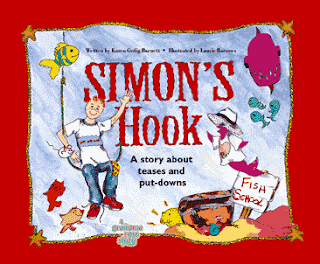Angela Poovey is a school counselor in North Carolina and she wrote a great post for the beginning of the school year. Check out some of her TOP 10 School Counselor Resources in her post which is re-posted here with her blessings.
You can find out more about Angela on her blog: Life on the Fly...A School Counselor Blog
Make an Investment: TOP 10 School Counselor Resources
by Angela Poovey
1. Kimochis. Love this doll for talking to kids, especially young ones, about feelings and situations that are causing those feelings. I used to have this one, but now it is not easily available in full size so I switched things up. Meet "Lovey Dovey"....kids love putting the feelings under his wing.


2. Wooden dollhouse. Another great "must-have" for talking with younger kids, but I must say ALL ages at my schools have loved to look at it. I have noticed that if you ask kids to "organize" the furniture while you are talking to them, they are much more relaxed. This new version is smaller than my old one and was pretty reasonable here.


3. Kinetic sand. You may remember all my STEM projects over the past two years. After using kinetic sand with those activities, I decided that I loved using it in individual counseling, too. The kids would agree. It is probably the number 1 item kids love to look at while we are meeting. This year I added a sand tray so kids could play with it more easily without a mess. Note: You can use a 40% or 50% off coupon and get it for a great price at Michael's.
4. Butcher paper and markers. This old-school standby has been a "go to" since DAY ONE of my counseling career. Cheap, easy, replaceable, and totally open to kids' (and your) creativity. Cover your table today!
5. Mirror decals. My new addition to the office is becoming a big hit. So far it has mainly been a conversation piece during new student lunches, but I added some positive thought decals above and below the rectangles for future use with replacing negative thoughts.
6. Number line scale. If you use solution-focused counseling as a main theory, as I do, having a visual where kids can clip their number is a must-have. Mine was created by a PTA volunteer years ago and probably should be updated. However, if it's not broken, don't fix it (or something like that)!
8. Problem solving card (picture coming). I use this card when I work with students on friendship problems or conflict resolution EVERY WEEK. It is a great laminated "take away" resource for kids to have and helps them transfer problem solving skills to other areas when they aren't with me. Here is a very early version I used for K-2. I will take a current pic ASAP!
9. I didn't want to list every bibliotherapy book that I LOVE because then my entire blog post would be purely about books (maybe a later post?!). However, here are a few top books that I love for behavior, academics, and social skills (All are available on Amazon and a few have lessons on my TPT that correspond).



10. Balloons. I wrote about balloons in my Found Objects post, and I am
still using them today. Whether using them as an icebreaker or in a
celebration moment with "Balloon Balloon", illustrating anger
management, or practicing specific skills such as coping strategies or
friendship skills, balloons come in handy. They are inexpensive, don't
take up a lot of space, and are a fun,concrete visual.

So, there you have it! Write a grant, ask your PTA for money, or beg your principal so you can get some of these fun resources. What are your faves?! I'd love to hear!
Happy Counseling! ~ Angela
Thank you for sharing with us, Angela.
You can find out more about Angela and her work as a school counselor on her blog: Life on the Fly...A School Counselor Blog
Let's not forget about business partners. Let them know what you are doing and how it will impact the community and your students. They may be willing to support your program.
Please share your ideas below in the comments:


















